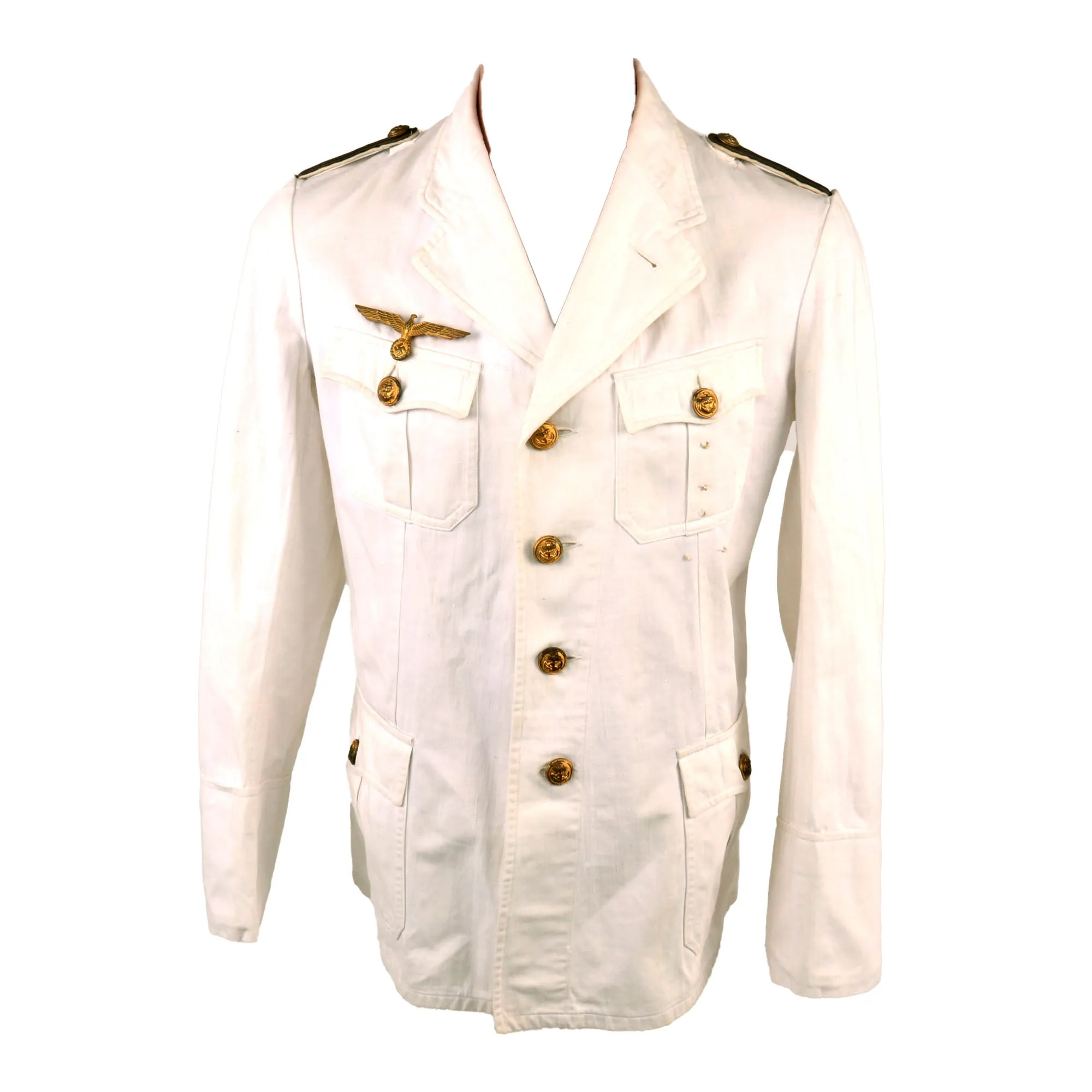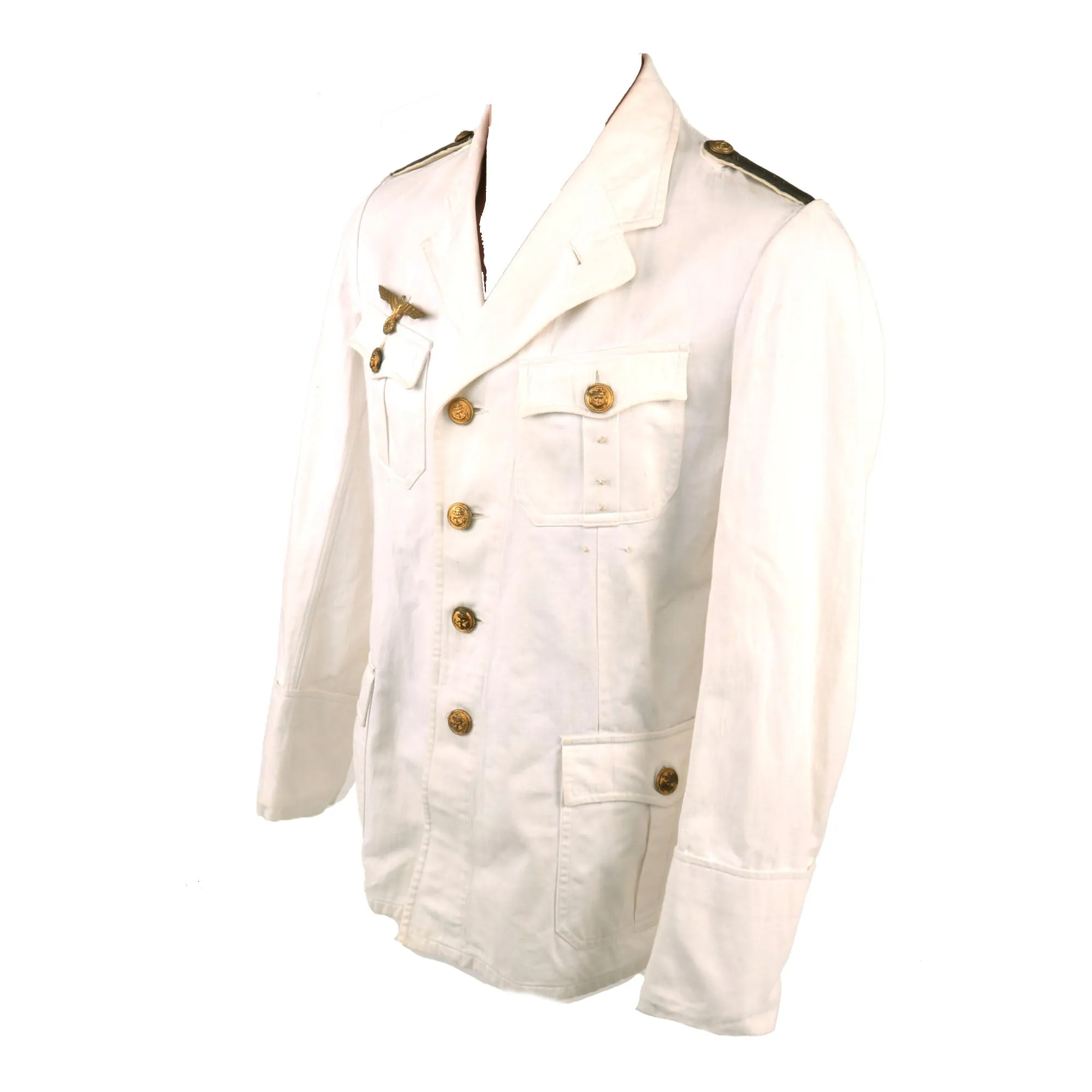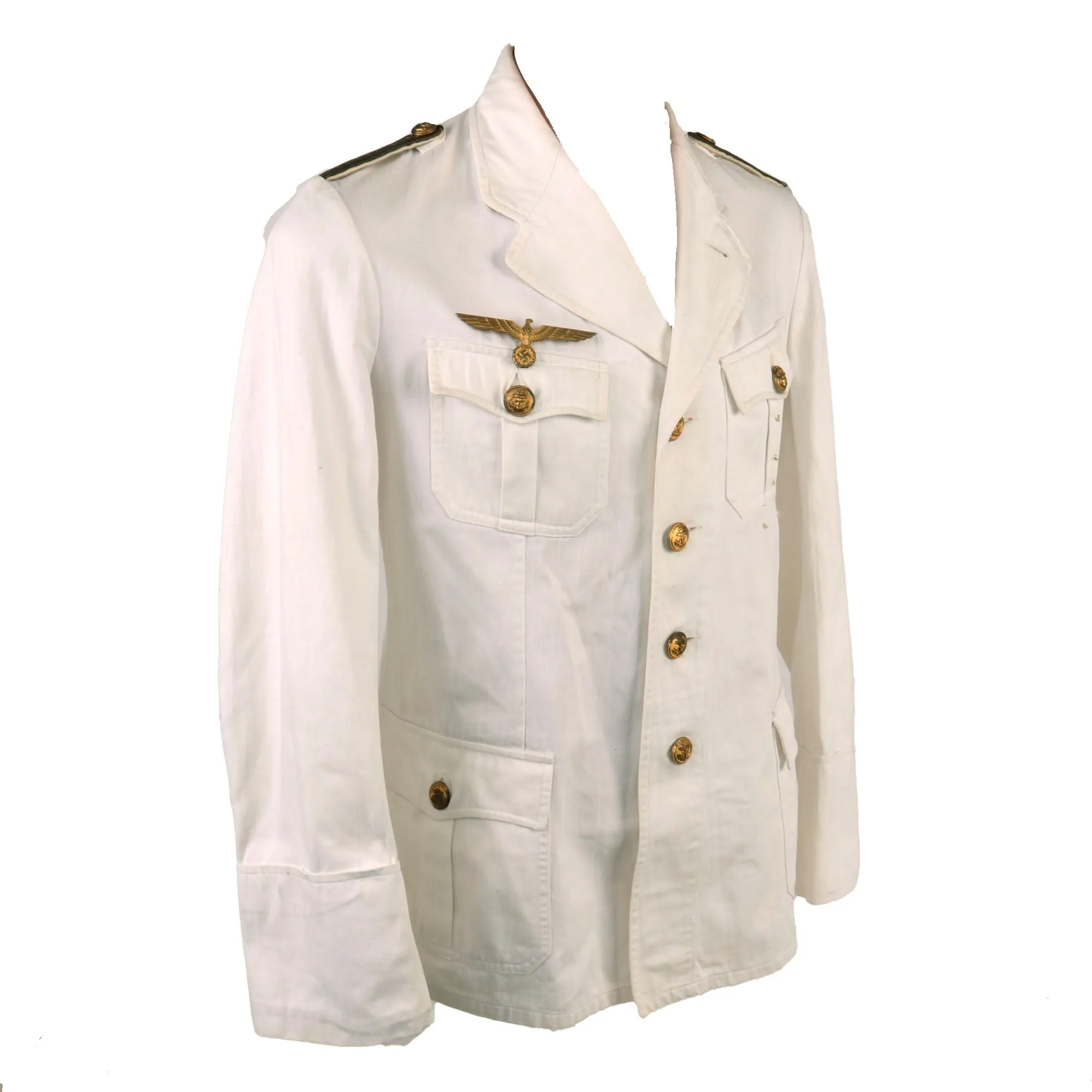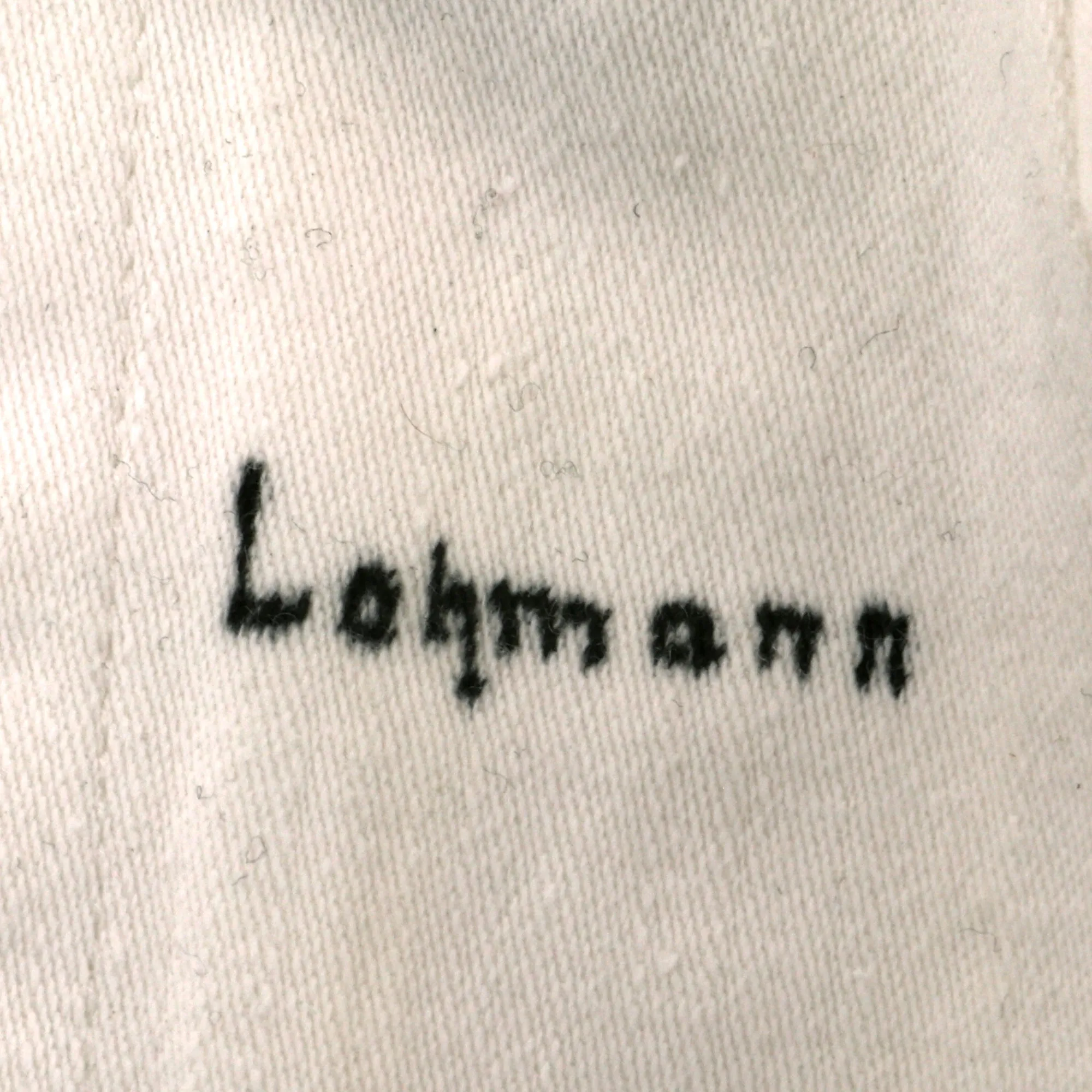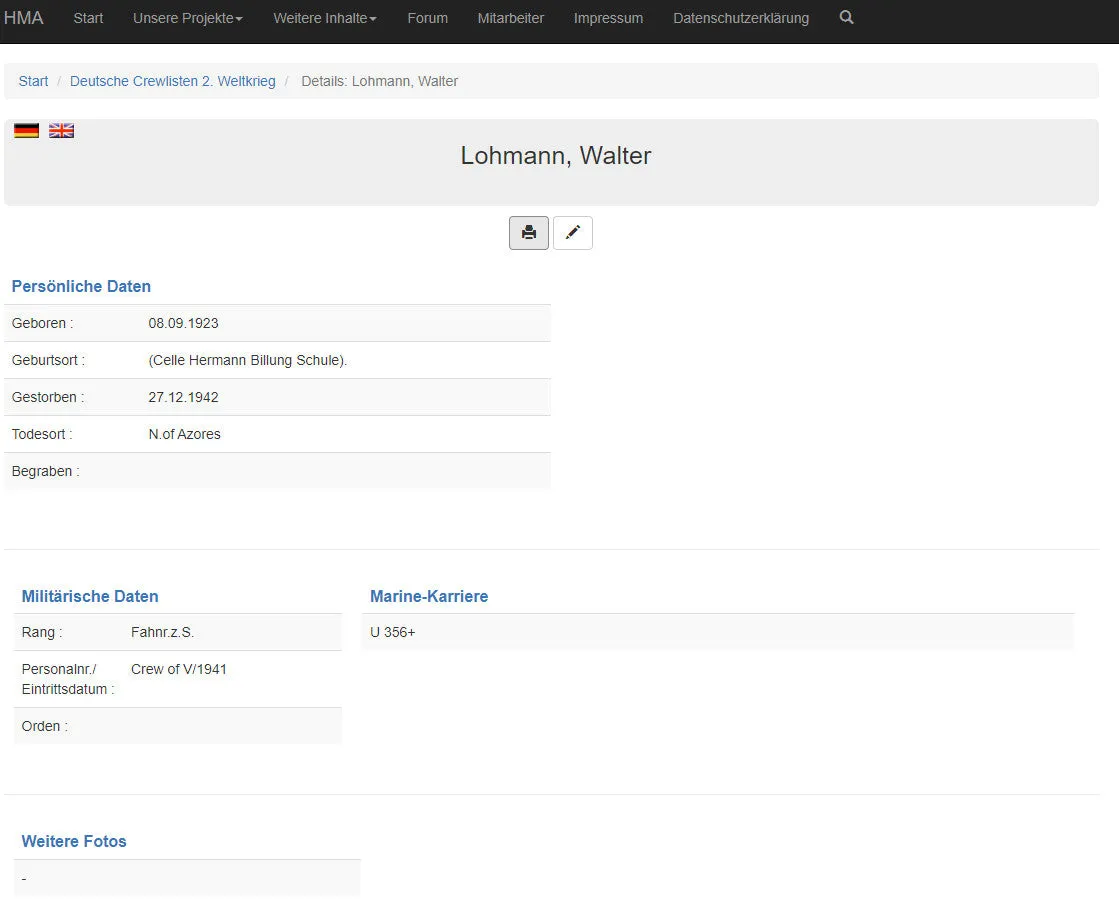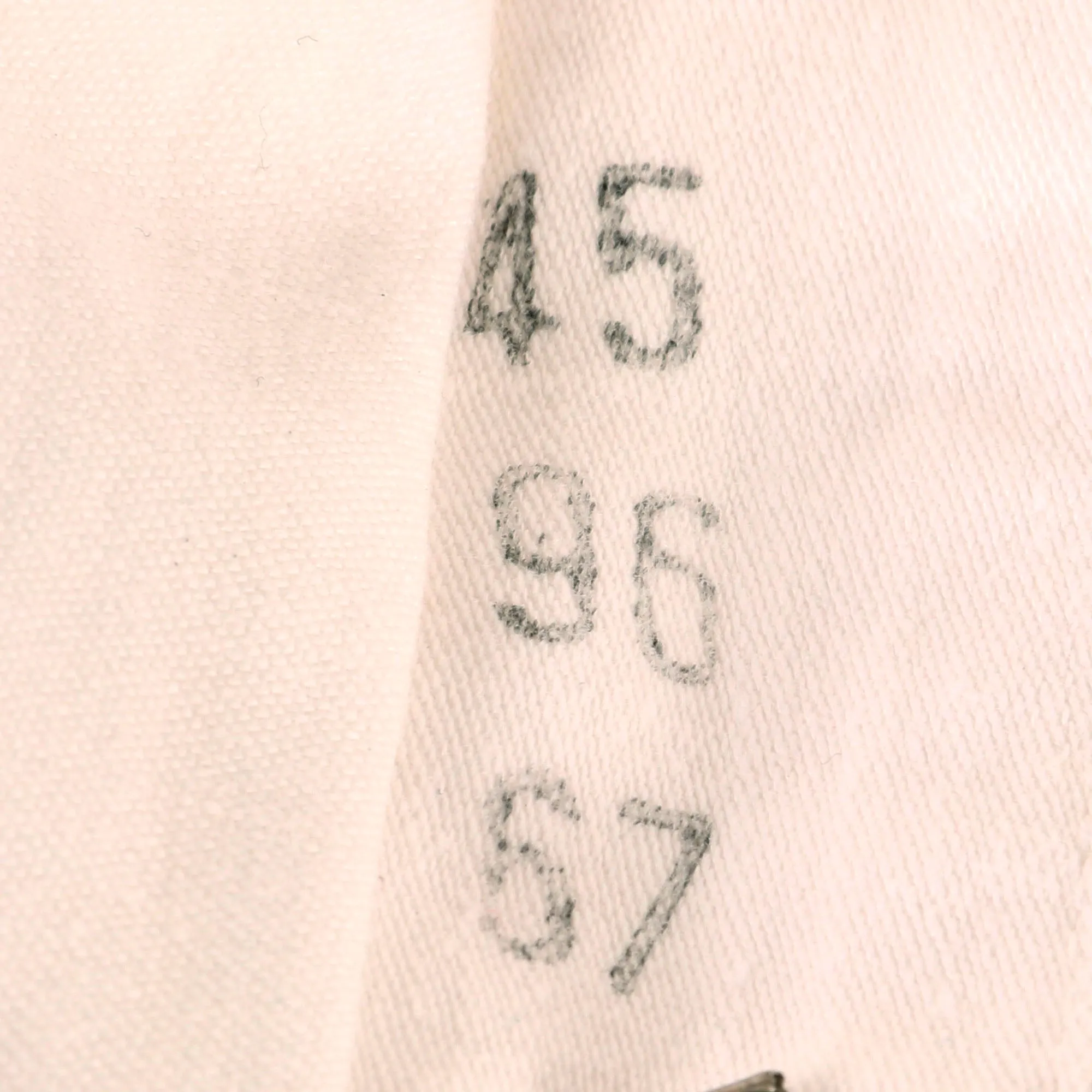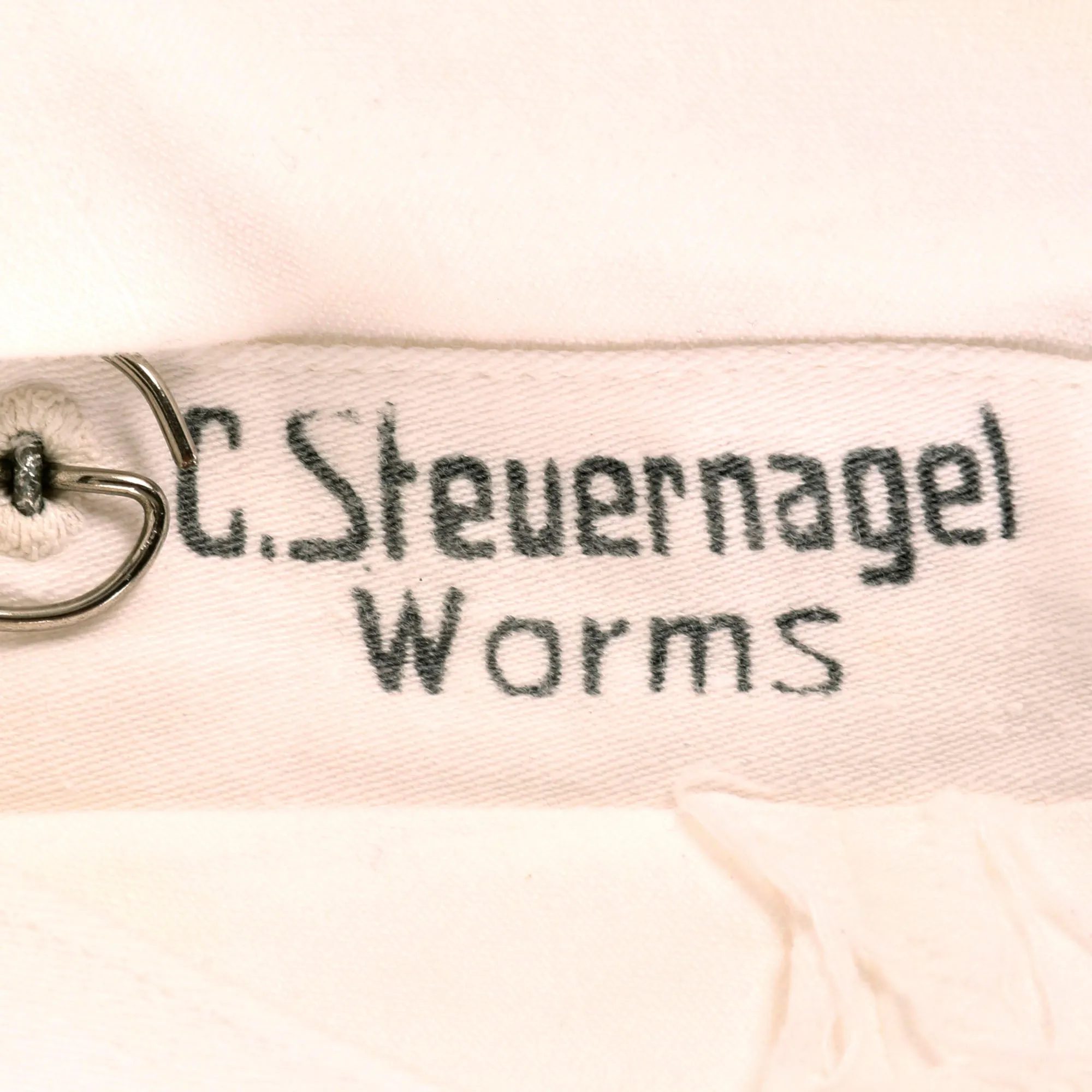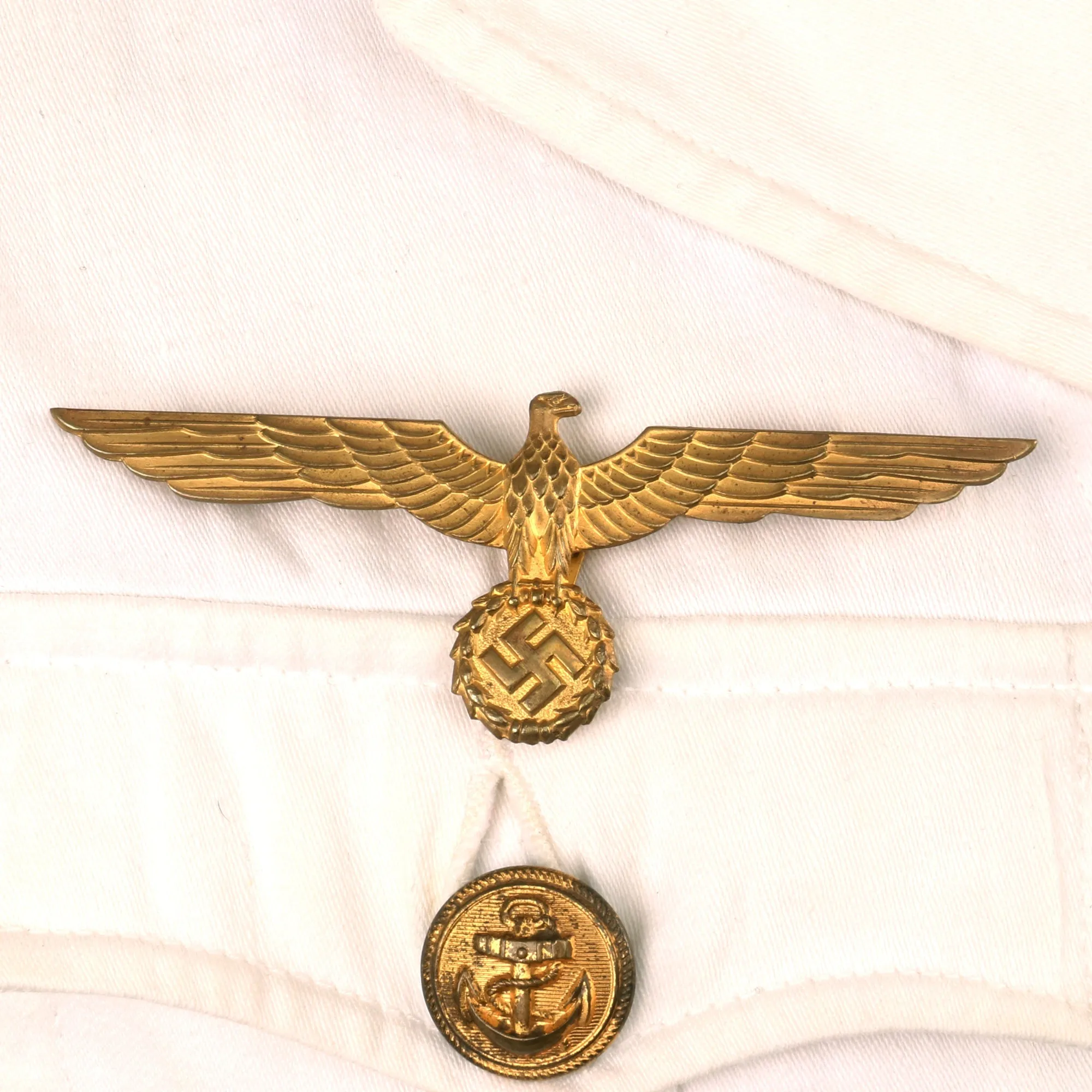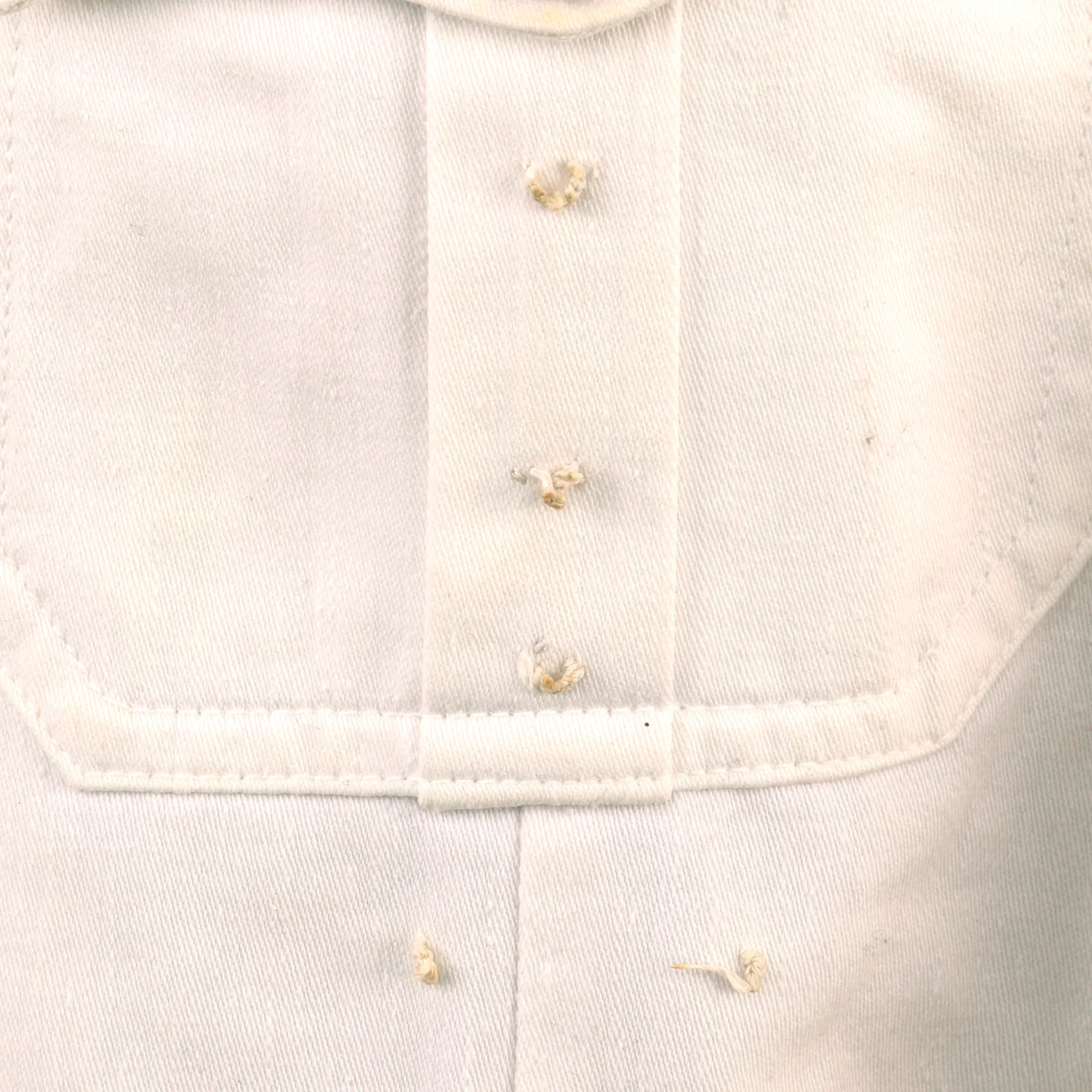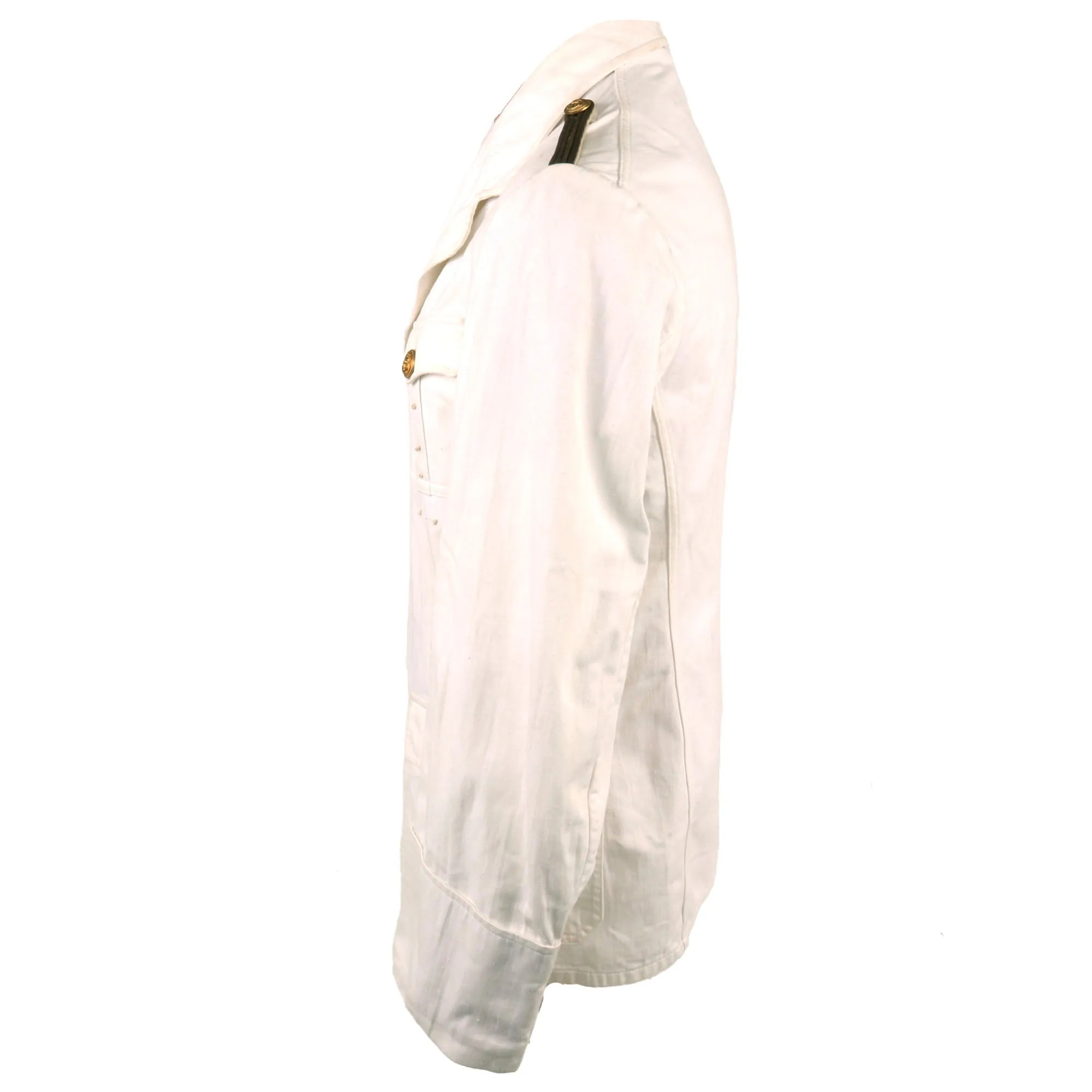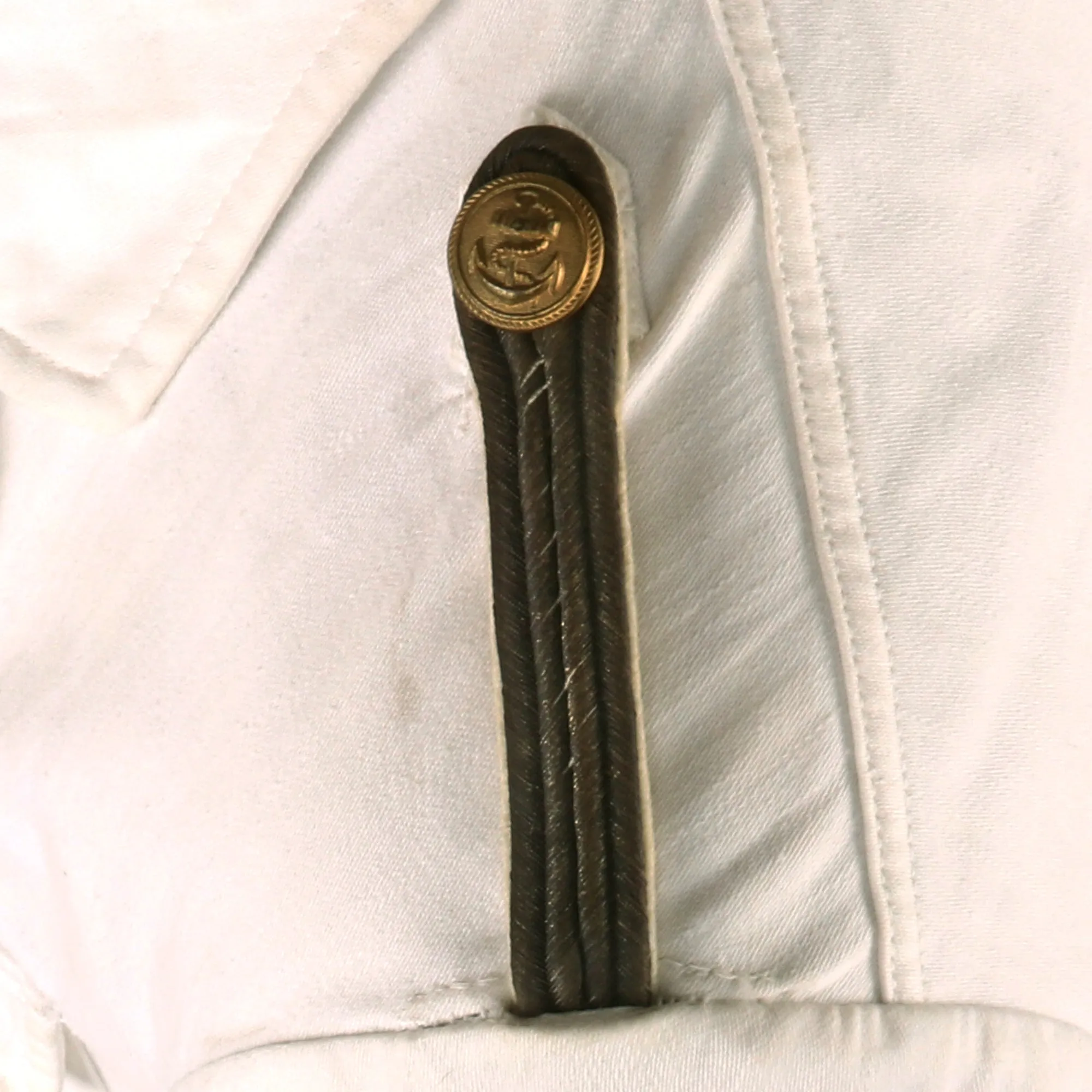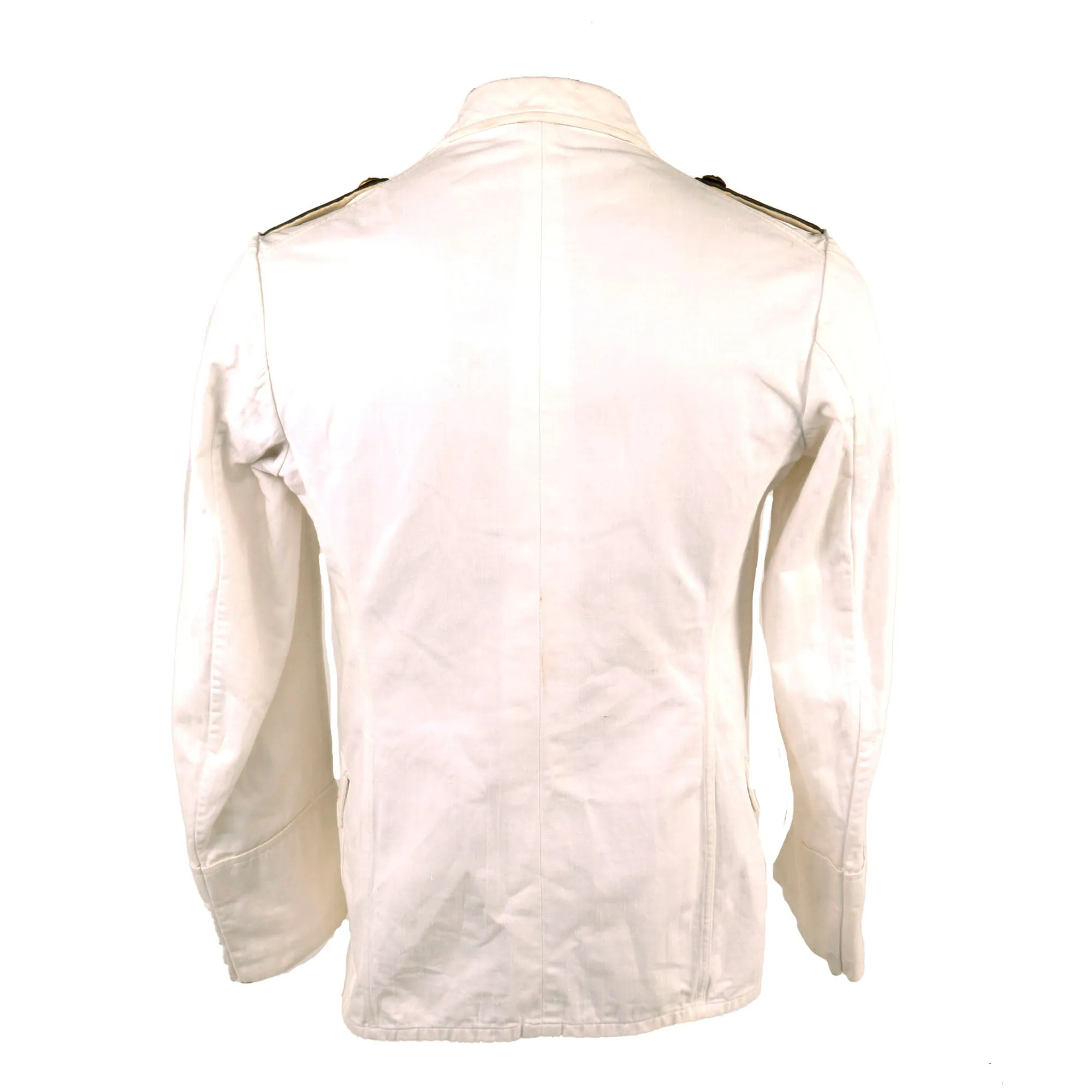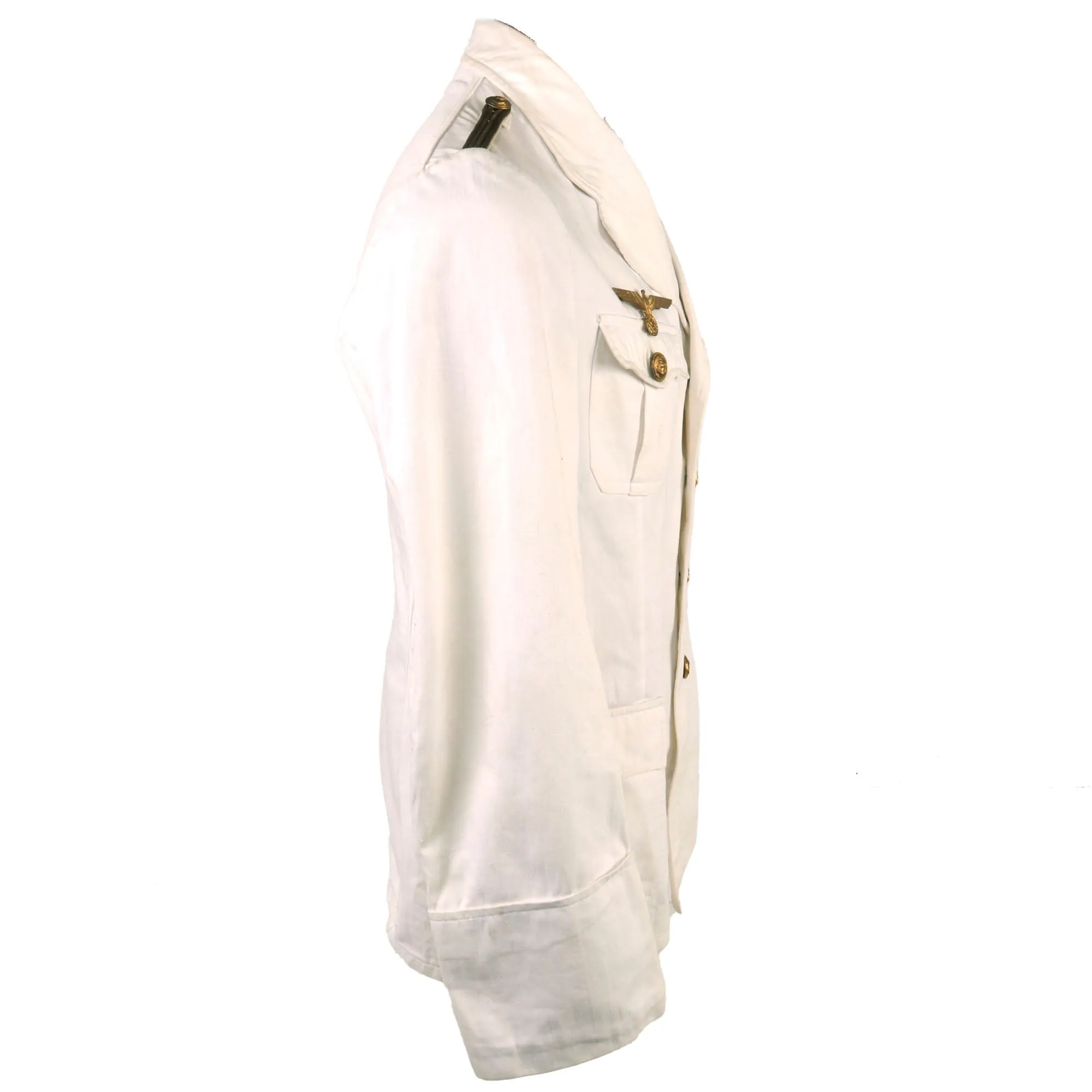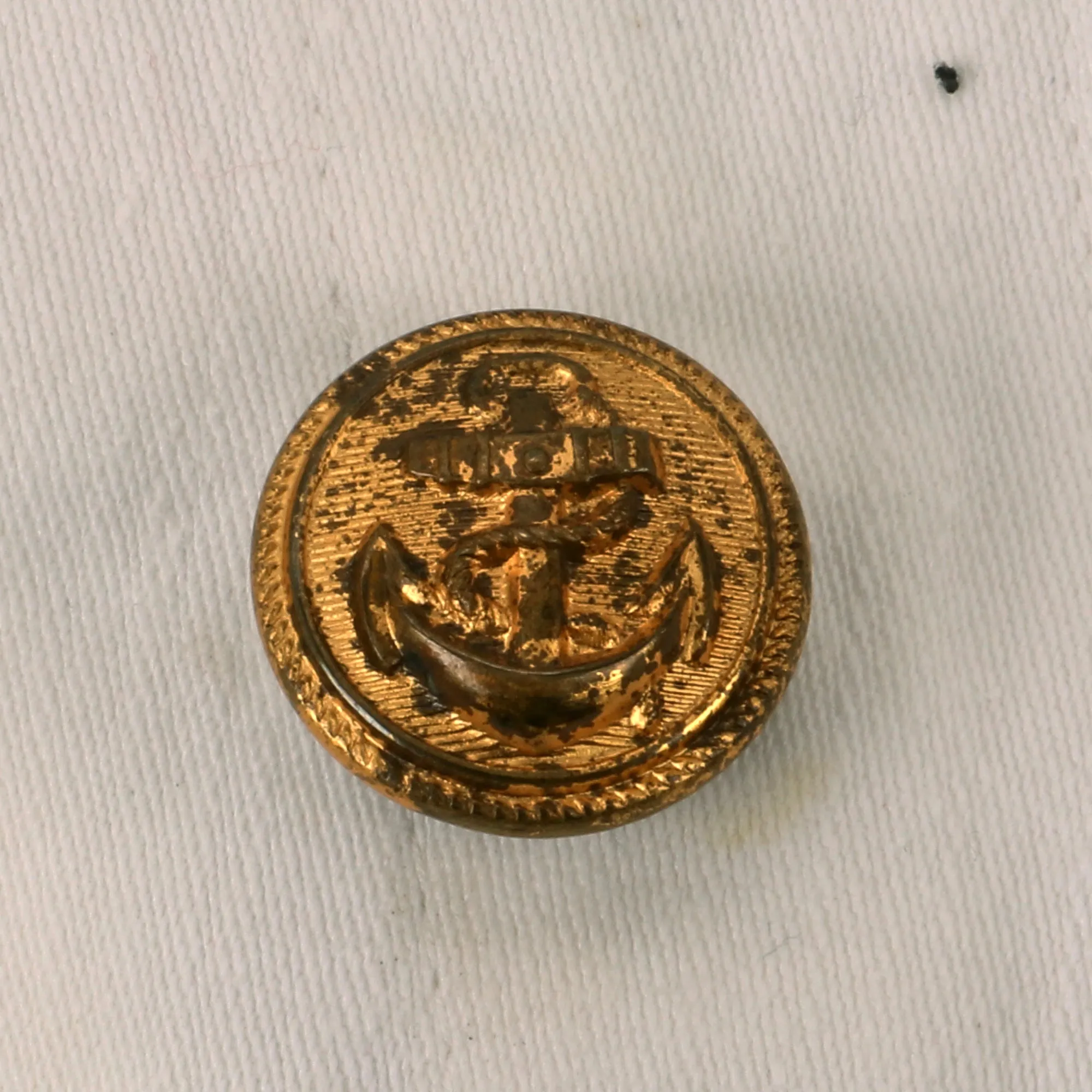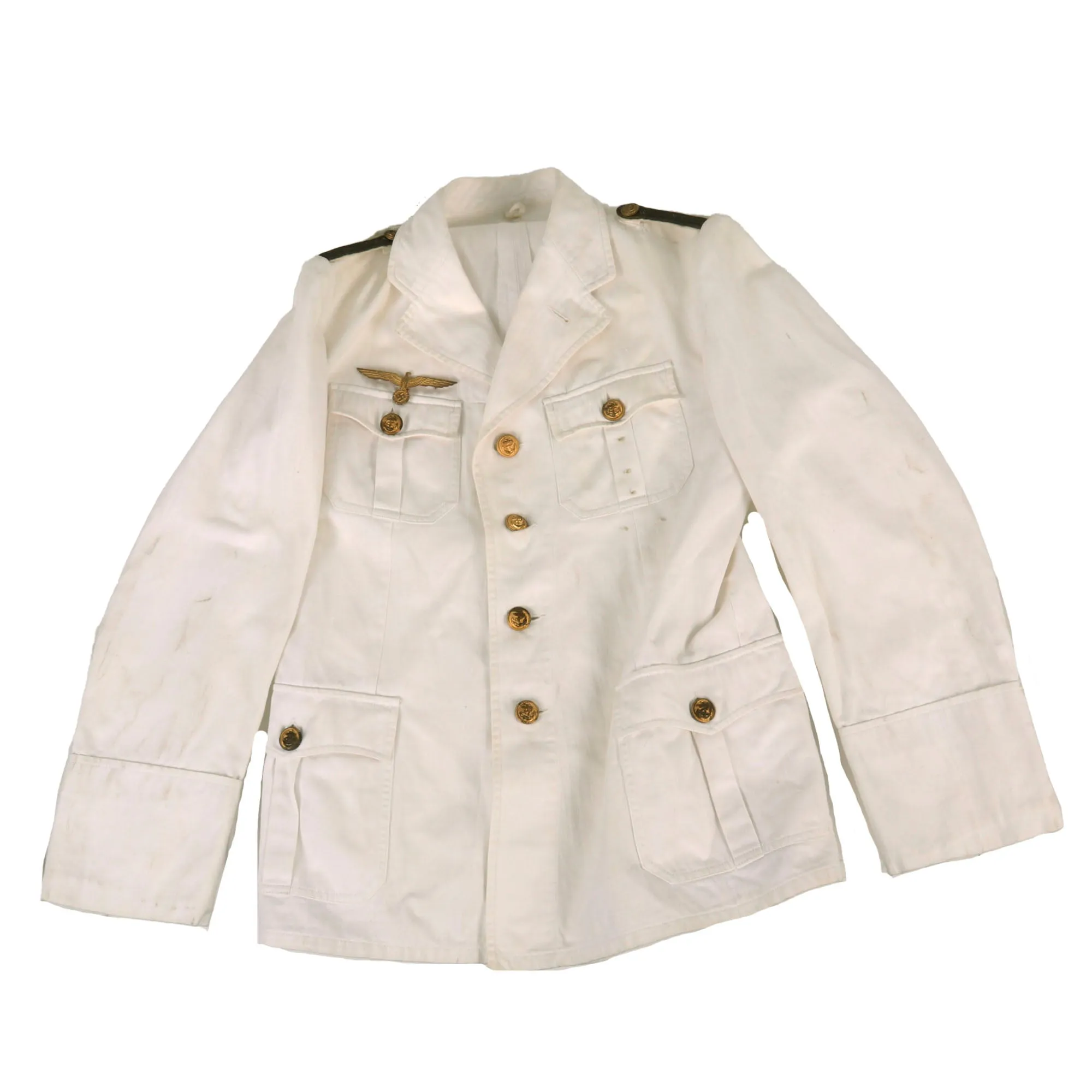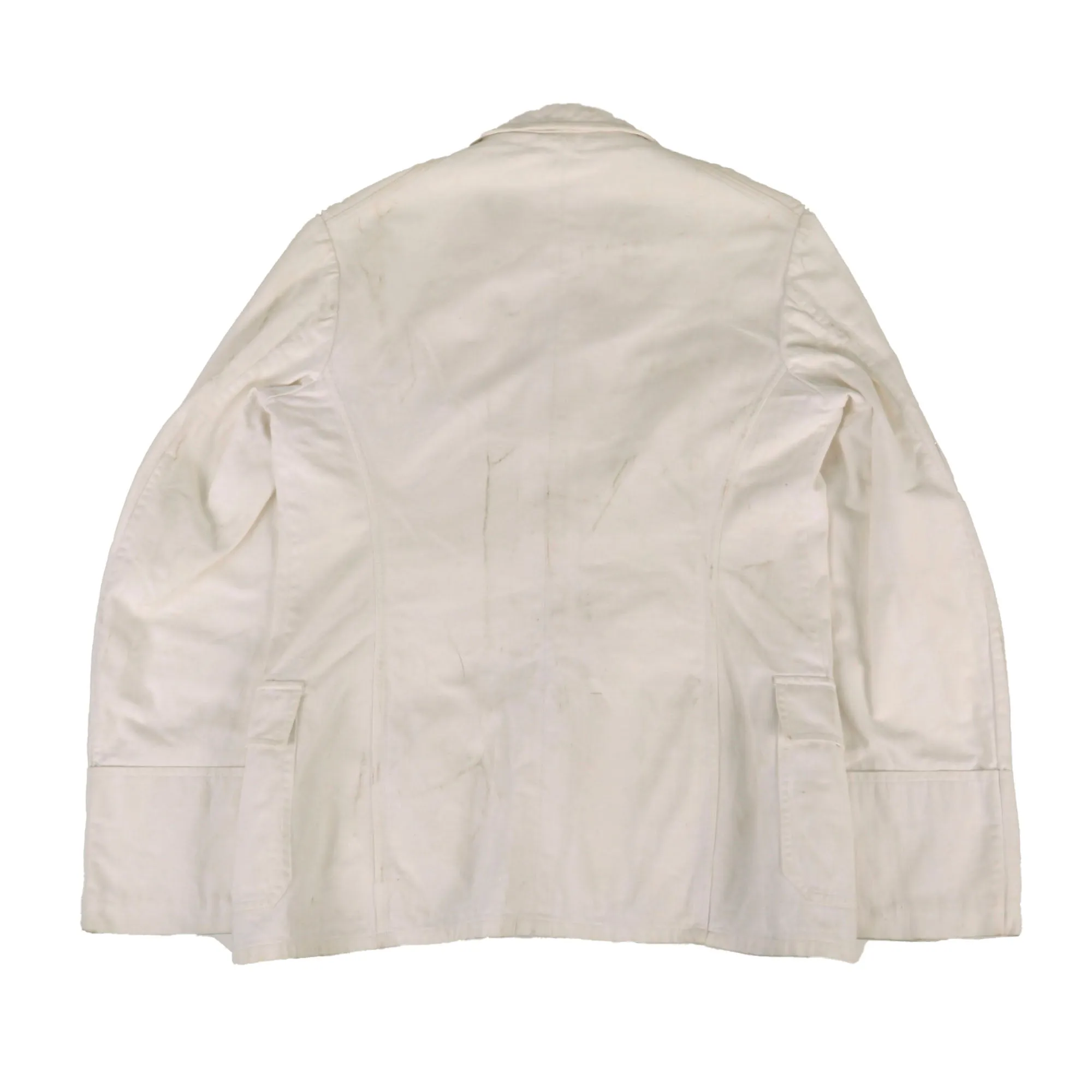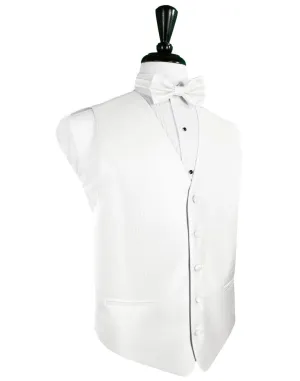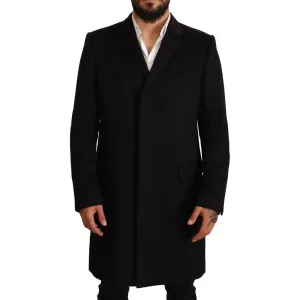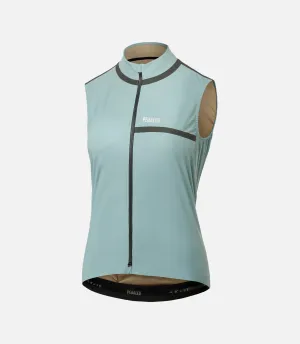Original Item: Only One Available. The Kriegsmarine was the navy of NSDAP Germany from 1935 to 1945. It superseded the Imperial German Navy of the German Empire (1871–1918) and the inter-war Reichsmarine (1919–1935) of the Weimar Republic. The Kriegsmarine was one of three official branches, along with the Heer and the Luftwaffe, of the Wehrmacht, the German armed forces from 1935 to 1945.
This is a fantastic named German WWII Kriegsmarine white summer uniform tunic, maker marked under the button flap by C. Steurnagel / Worms, along with the size information of 45 / 95 / 57. It has rank insignia for a Fähnrich zur See (Ensign at Sea) Officer Candidate, and also is named on the inside right with Lohmann. Often we are unable to find information on named items, but in this case, we were able to get a match at the German Historisches Marinearchiv (Historical Naval Archive) website: .
Per the information on the website, Walter Lohmann was born 8 September 1923 in Celle, Germany. He began his military career in 1941 at the age of 18, and is listed as a "Fahnr.z.S.", part of the Crew of U-356. This U-boat was commanded during training and its first patrol by Kapitänleutnant Georg Wallas from 20 December 1941 to 2 December 1942. After this, for the second patrol, Oberleutnant zur See Günther Ruppelt assumed command on 3 December 1942. His tenure was unfortunately relatively short lived, as during the second patrol, after sinking several merchant vessels, U-356 was sunk north of the Azores islands on 27 December 1942, with all hands lost. We presume that this uniform was left back at port or at home, as the white dress uniform would be little use on a U-Boat.
Aside from the history, this is a lovely condition summer uniform tunic, fabricated from white cotton, and features it a standard fold down collar with lapels. There are four pockets on the front with scalloped flaps, one on each breast and larger ones at the waist on both sides. Each is designed with a decorative pleat and gilt Kriegsmarine buttons, each of which is maker marked and are held in place by clips on the inside of the pocket embedded in the pleat. The front of the jacket has a vertical row of four Kriegsmarine gilt buttons, also maker marked held in place by clips on the underside and visible on the inside of the tunic under a flap, which has the previously mentioned markings on it.
The right breast above the pocket is enriched with a Summer Kriegsmarine Metal breast eagle insignia pin held in place via two vertically-aligned vertical loops in white threading for the pin, with two horizontal loop below for the hook on the bottom. There are additional thread loops over and on the left breast pocket, for awards not included on the uniform.
The officer candidate Schulterstücken (Shoulder boards) of this tunic are constructed with a single row of fine silver flatware "Russia Braid" double piping and have the correct white backing for the Kriegsmarine summer field uniforms. They are the type that slides through a slot in the shoulder seam, and is held in place by a wider piece on the end, with the other end attached to the button on the uniform. There are no rank "pips", indicating a Fähnrich zur See (Ensign at Sea), a rank equivalent to a U.S. Navy Midshipman.
Overall condition is excellent, showing just a bit of age toning and staining around the bottom, with no major tears or other damage. Really a fantastic looking tunic with some great research and display potential.
A fantastic German WWII Kriegsmarine Officers White Summer Tunic, ready to dress up with some awards and add to your collection.
Approximate Measurements:-
Collar to shoulder: 9.5"
Shoulder to sleeve: 25”
Shoulder to shoulder: 15”
Chest width: 18”
Waist width: 16.5"
Hip width: 18.5”
Front length: 29"
WWII Kriegsmarine
In violation of the Treaty of Versailles, the Kriegsmarine grew rapidly during German naval rearmament in the 1930s. The 1919 treaty had limited the size of the German navy and prohibited the building of submarines
Kriegsmarine ships were deployed to the waters around Spain during the Spanish Civil War (1936–1939) under the guise of enforcing non-intervention, but in reality supported the Nationalists against the Spanish Republicans.
In January 1939, Plan Z, a massive ship-building program, was ordered, calling for surface naval parity with the British Royal Navy by 1944. When World War II broke out in September 1939, Plan Z was shelved in favour of a crash building program for submarines (U-boats) instead of capital surface warships, and land and air forces were given priority of strategic resources.
The Commander-in-Chief of the Kriegsmarine (as for all branches of armed forces during the period of absolute NSDAP power) was AH, who exercised his authority through the Oberkommando der Marine ("High Command of the Navy").
The Kriegsmarine's most significant ships were the U-boats, most of which were constructed after Plan Z was abandoned at the beginning of World War II. Wolfpacks were rapidly assembled groups of submarines which attacked British convoys during the first half of the Battle of the Atlantic but this tactic was largely abandoned by May 1943 when U-boat losses mounted. Along with the U-boats, surface commerce raiders (including auxiliary cruisers) were used to disrupt Allied shipping in the early years of the war, the most famous of these being the heavy cruisers Admiral Graf Spee and Admiral Scheer and the battleship Bismarck. However, the adoption of convoy escorts, especially in the Atlantic, greatly reduced the effectiveness of surface commerce raiders against convoys.
Following the end of World War II in 1945, the Kriegsmarine's remaining ships were divided up among the Allied powers and were used for various purposes including minesweeping. Some were loaded with superfluous chemical weapons and scuttled.




